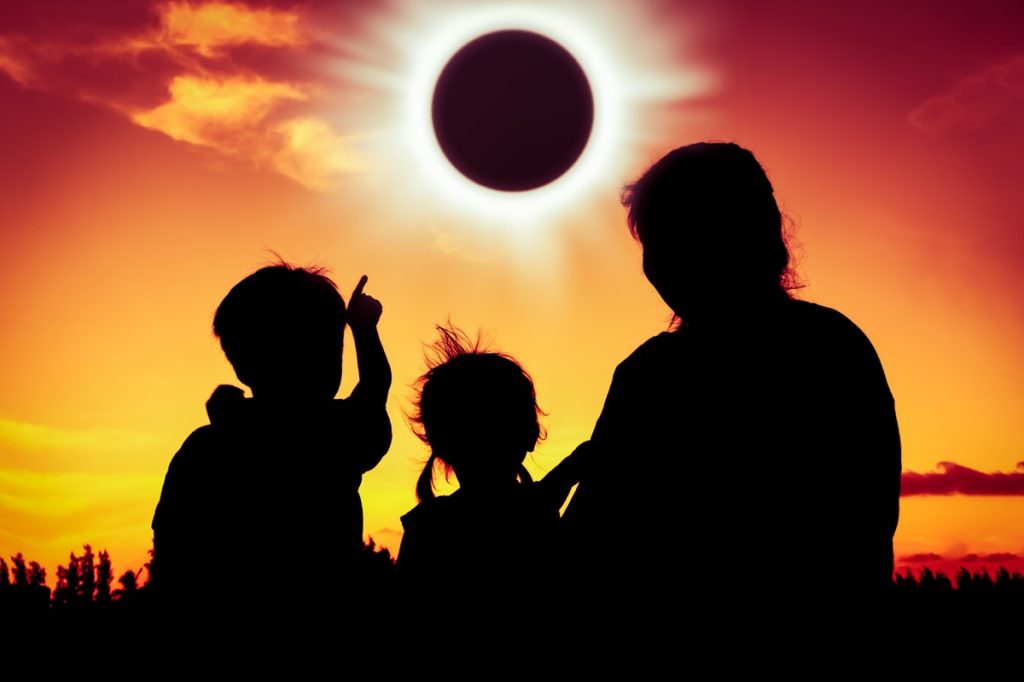Here’s How Much of the Total Solar Eclipse You Can See in Your Region

On April 8, the last total solar eclipse visible in the U.S. for two decades will take place. While the American public was treated to the same spectacle in 2017, the upcoming path of totality cuts across a much more densely populated set of states, with 31.6 million people living in areas that will see the moon completely cover the sun, according to NASA. And though many are planning on traveling to make sure they have a front-row seat to the special event, lots of areas will still get a decent view right from their backyard. Read on to see how much of the upcoming total solar eclipse you’ll be able to observe in your region.
RELATED: What Really Happens to Your Eyes If You Look Directly at a Solar Eclipse.
Northwest

Those who live in the Northwest are unfortunately in a position to see the least obscuration of the sun, according to NASA. Those along the coastal areas in Washington will only see about 15 percent coverage, while Seattle and the Oregon coast will get 20 percent and Spokane will see 25 percent.
The view gets better further inland, with Western Oregon and Montana getting between 30 and 35 percent obscuration. Boise, central Idaho, and central Montana—including Helena—will get up to 40 percent, while the eastern part of each state could see 45 percent coverage of the sun.
RELATED: 8 Best Destinations for the Next (and Rare) Total Solar Eclipse.
Southwest & California

The rest of the West Coast will also get relatively shorthanded on the eclipse, with Northern California through the Bay Area only getting 30 to 35 percent obscuration. The Southern California coast down through Los Angeles will get up to 45 percent sun coverage, as well as central Nevada and Salt Lake City, Utah.
Major cities in the region, including San Diego and Las Vegas, will get over 50 percent coverage during the eclipse. Further into the Southwest, cities such as Phoenix, Denver, and Colorado Springs will get about 65 percent obscuration. At the same time, Tucson, Albuquerque, and Santa Fe will see about 70 to 75 percent coverage or more.
RELATED: Parts of the U.S. Will See the Northern Lights in 2024—Here’s Where and When.
Midwest & Northern Plains

North and South Dakota will see 45 to 65 percent of sun coverage from west to east at the peak of their eclipse viewing. Eastern Nebraska up through the Twin Cities, Des Moines, and northern Wisconsin will see up to 80 percent coverage.
Areas just outside the path of totality in the region, including southern Wisconsin, lower Michigan, central Missouri, and northwestern Indiana, and major cities like Chicago, St. Louis, and Detroit could see up to 95 percent sun coverage. Full sun coverage will cut across southern Illinois and central Indiana, including through Indianapolis.
South & Southeast

The first glimpse of the total eclipse will first be visible in the U.S. from south Texas, with Austin, Dallas, Fort Worth, and San Antonio within the path of totality. Most of the northwestern corner of Arkansas will also see full coverage, including Little Rock.
While they won’t reach total obscuration, cities like Memphis, Nashville, Houston, Shreveport, and Corpus Christi will get a view of 90 percent or more sun coverage. The Gulf Coast and cities, including Atlanta, Montgomery, Birmingham, and Charleston, South Carolina, will see at least 70 percent coverage.
Meanwhile, those in Florida will see obscuration diminish as you head east. Tampa will get 55 percent coverage, while Miami will get about 45 percent.
RELATED: “Devil Comet” With Horns Is Racing Toward Us—Here’s When and Where It Arrives.
East & Northeast

The path of totality also covers big swaths of the Eastern and Northeastern U.S. Full coverage will be seen across central and northern Ohio in Cleveland; across western and northern New York in Buffalo and Rochester; in northern Vermont and New Hampshire; and across much of northern Maine.
Cities including Boston, Pittsburgh, and New York City will still get close to full coverage with 90 percent more obscuration or more. And Philadelphia, Baltimore, and Washington, D.C., will see between 85 and 90 percent coverage during the eclipse.